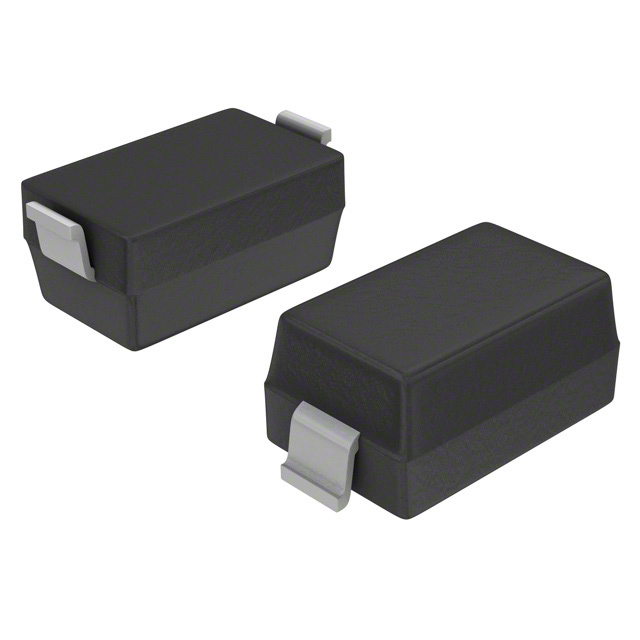BZT52C20-7
Product Overview
Category
The BZT52C20-7 belongs to the category of Zener diodes.
Use
It is commonly used for voltage regulation and protection in electronic circuits.
Characteristics
- Voltage regulation capability
- Reverse breakdown voltage of 20V
- Low leakage current
- Small package size
Package
The BZT52C20-7 is typically available in a SOD-123 package.
Essence
This Zener diode serves as a crucial component in maintaining stable voltage levels in electronic circuits.
Packaging/Quantity
It is usually packaged in reels with quantities varying based on manufacturer specifications.
Specifications
- Reverse Breakdown Voltage: 20V
- Power Dissipation: 500mW
- Forward Voltage: 1V
- Maximum Zener Impedance: 40Ω
- Operating Temperature Range: -65°C to 150°C
Detailed Pin Configuration
The BZT52C20-7 Zener diode typically has two pins, with the cathode identified by a band or marking on the body of the diode.
Functional Features
- Precise voltage regulation
- Protection against voltage spikes
- Low operating impedance
- Compact form factor
Advantages
- Accurate voltage regulation
- Small size
- Low leakage current
Disadvantages
- Limited power dissipation capability
- Narrow operating temperature range
Working Principles
The BZT52C20-7 operates based on the principle of the Zener effect, where it maintains a constant voltage across its terminals when reverse biased.
Detailed Application Field Plans
The BZT52C20-7 is widely used in: - Voltage regulators - Overvoltage protection circuits - Signal clamping applications
Detailed and Complete Alternative Models
Some alternative models to the BZT52C20-7 include: - BZX84C20 - 1N4744A - MMBZ5220B
This provides a comprehensive overview of the BZT52C20-7 Zener diode, including its category, use, characteristics, package, specifications, pin configuration, functional features, advantages and disadvantages, working principles, detailed application field plans, and alternative models.
Lista 10 Vanliga frågor och svar relaterade till tillämpningen av BZT52C20-7 i tekniska lösningar
What is the maximum power dissipation of BZT52C20-7?
- The maximum power dissipation of BZT52C20-7 is 300mW.
What is the reverse voltage of BZT52C20-7?
- The reverse voltage of BZT52C20-7 is 20V.
What is the forward voltage drop of BZT52C20-7?
- The forward voltage drop of BZT52C20-7 is typically 0.9V at a forward current of 20mA.
What is the operating temperature range of BZT52C20-7?
- The operating temperature range of BZT52C20-7 is -65°C to +150°C.
Can BZT52C20-7 be used for voltage regulation in low-power applications?
- Yes, BZT52C20-7 can be used for voltage regulation in low-power applications due to its low forward voltage drop and high reverse voltage.
Is BZT52C20-7 suitable for overvoltage protection in electronic circuits?
- Yes, BZT52C20-7 can be used for overvoltage protection in electronic circuits due to its ability to clamp the voltage and protect downstream components.
What are the typical applications of BZT52C20-7 in technical solutions?
- BZT52C20-7 is commonly used in voltage clamping, overvoltage protection, voltage regulation, and signal conditioning in various technical solutions.
Does BZT52C20-7 require any external components for proper operation?
- BZT52C20-7 does not require any external components for basic operation, making it easy to integrate into technical solutions.
What are the key characteristics that make BZT52C20-7 suitable for technical solutions?
- BZT52C20-7 offers low leakage current, fast response time, and high reliability, making it well-suited for a wide range of technical applications.
Are there any specific layout considerations when using BZT52C20-7 in technical designs?
- It is important to minimize lead lengths and ensure proper heat sinking to maximize the performance and reliability of BZT52C20-7 in technical designs.


